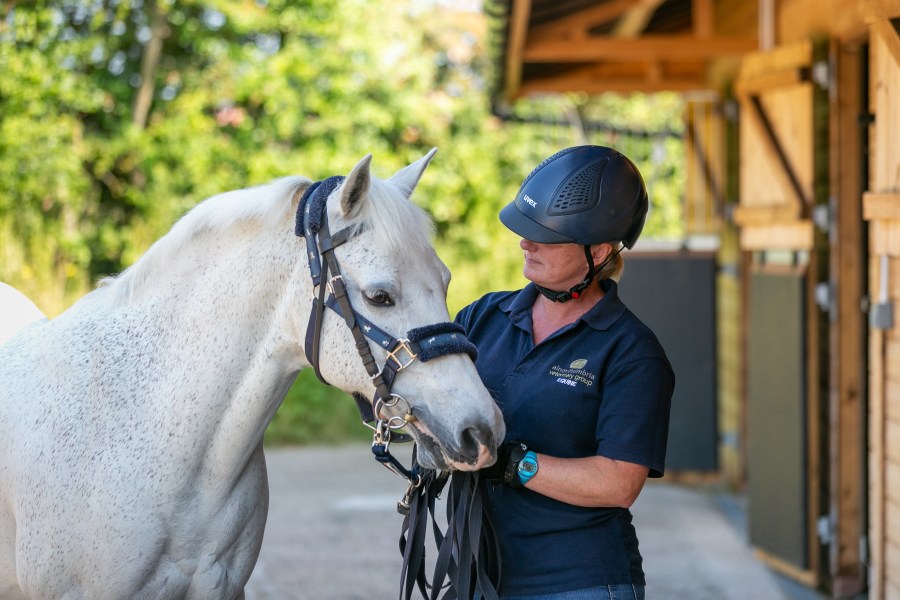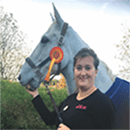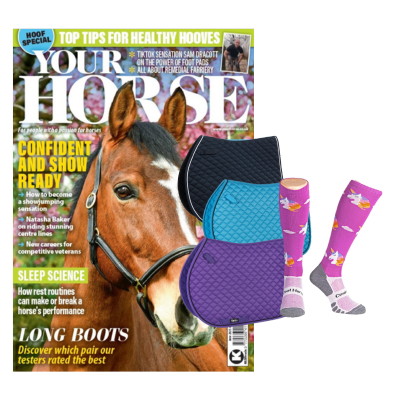All vets and vet nurses at CVS Equine are now required to wear a hard hat when handling, assessing or treating a horse in order to reduce the number of head injuries that occur.
It follows a three-year research project in collaboration with the University of Liverpool, which found that 90% of veterinary staff have experienced an injury during their career.
The research identified that head injuries were one of the most common injuries, usually when examining horses’ lower legs.
“Vet visits are not an ‘everyday activity’ for a horse. As a result, many horses will be on heightened alert, and some may be more prone to unpredictable behaviour,” said Dr John Tulloch, lecturer and European specialist in Veterinary Public Health at the University of Liverpool, who led the research.
“Vets are often in a vulnerable situation when examining a horse and it’s difficult to pick up on a horses’ signals, especially when examining areas such as lower limbs.
“Our research found that many injuries happen when a horse kicks or pushes a person over and the person’s head makes impact with the ground.
“So, wearing a hard hat will be a big step towards preventing traumatic head injuries if this were to happen.”
Aligning with other professions
A hard hat must be worn whenever a vet or nurse is with a horse, pony or donkey, including on site at a veterinary practice or at a client’s yard.
The requirement has been rolled out across all of the veterinary group’s 22 practices around the UK.
“Equine rider safety has come a long way in the last 20 years, with riders now wearing hats, high vis, and often body protectors as a matter of course,” said Sophie Ignarski, director at CVS Equine.
“In asking our vets and nurses to wear hard hats, we are just joining other professions — such as airline and construction — who have introduced similar changes to improve safety, now established in their culture.
“Our clinicians are at risk in their day-to-day work, even when working with the best behaved and mildest mannered horses. So we ask that clients are not concerned when our colleagues wear their hats,” continued Sophie.
“We are grateful for the support we have already received from clients in relation to this change, and hope they will continue to work in partnership with our vets and nurses to help keep our staff safe.
“And if clients would like to show further support, then we’d encourage them to think about wearing their hats too.”
The research
The University of Liverpool’s study explored the context, consequences and behaviours surrounding veterinary workplace injuries in order to improve the safety of the profession.
It found that 49% of equine vets are injured annually. These injuries were predominately kicks to the leg or head, and usually involved the examination of a horse’s distal limb, with most not wearing hard hats.
Over 25% of equine vet injuries led to hospital attendance or admission.
Despite this few took time off work, citing guilt of extra workload to colleagues, or minimising the severity of their injuries.
According to the research, many injuries went unreported due to accepted risk and doubts about reporting impact.
“This study exposes a culture in large animal veterinary workplaces that normalises injuries and undervalues safety,” said a statement from CVS Equine.
“The lack of protective measures and the tendency to continue working despite serious injuries highlight a need for urgent cultural and systemic change.
“CVS [is] trying to drive this change, evidenced by [its] new hard hat policy.”
Injuries have become ‘normalised’
Earlier research based on a survey of 740 veterinary colleagues found that injuries have become “normalised, accepted and seen as everyday norms in veterinary practice”, resulting in many not being reported.
“In addition, it showed equine vets have a high threshold before acknowledging that an incident is a work-related injury; only if it reduces their ability to work or requires the need for medical treatment,” said the statement.
“As such dangerous events, for example kicks, were seen as ‘everyday’ events and are not deemed an injury, and were not being reported.”
Related content
- Equine vet who suffered brain injury at work backs calls for vets to wear hard hats
- Concussion and brain injuries in riders: what you need to know
- 5 things your horse’s vet really wishes you wouldn’t do
- Do you know an exceptional vet? Nominate them now for new BEVA award
- Vet explains how a horse’s joints work









